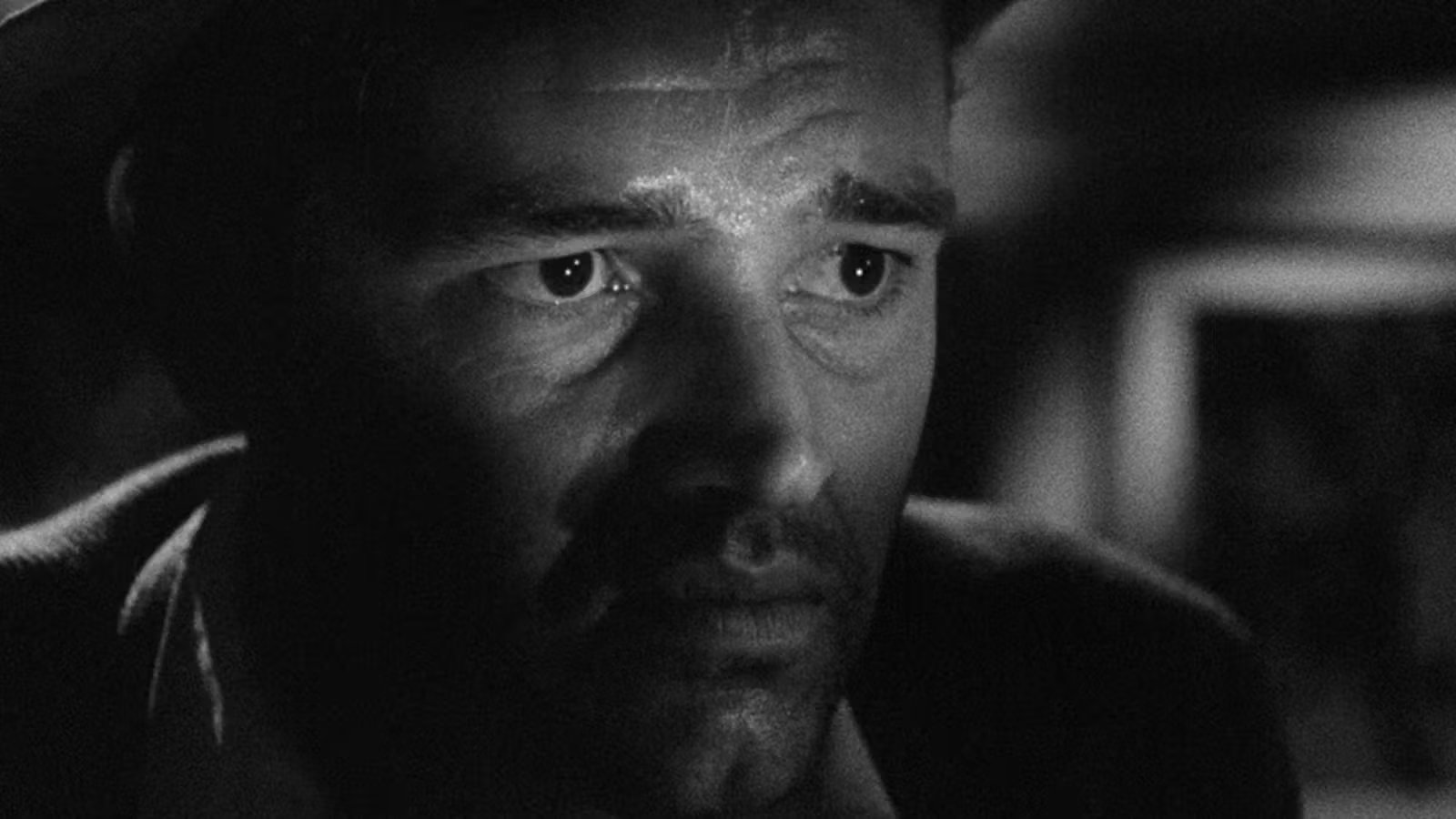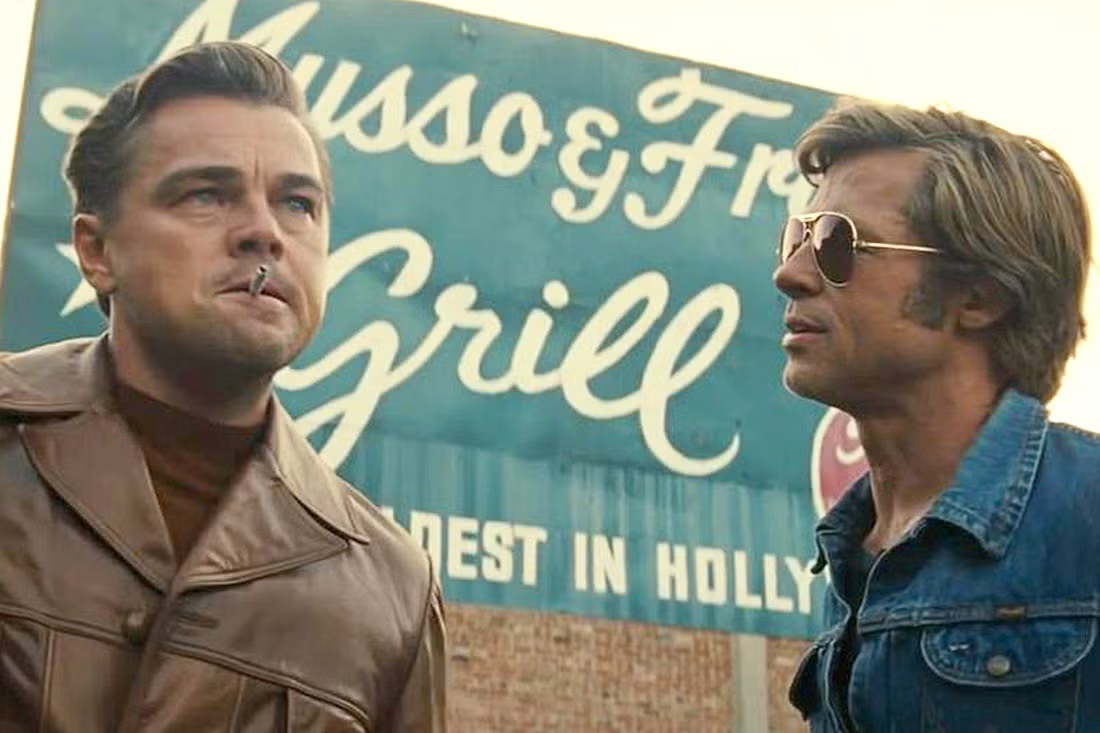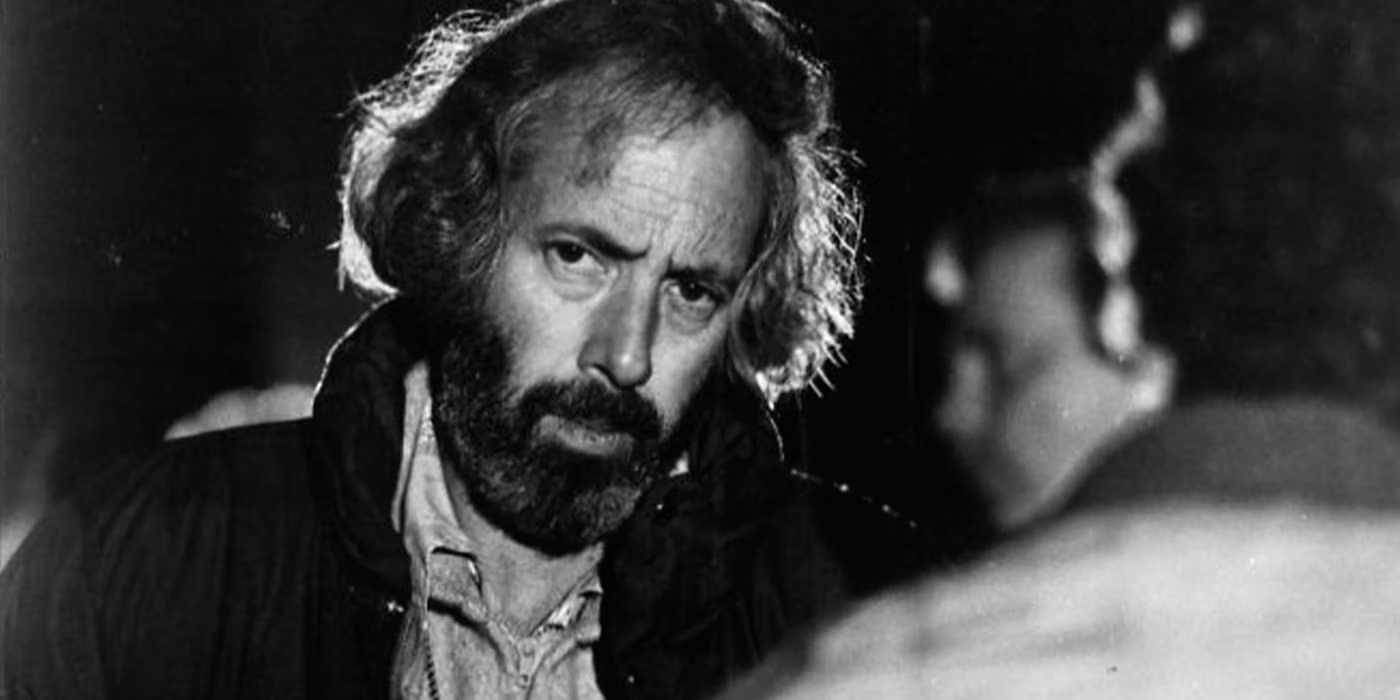By Dennis Hartley
(Originally posted on Digby’s Hullabaloo on June 28, 2025)

With the mercury continuing to soar in many sections of the country I thought I would curate a Top 15 “hot” noirs festival. Hot-as in sweaty, steamy, dripping, sticky, sudoriferous crime thrillers (get your mind out of the gutter). If you’re like me (and isn’t everyone?) there’s nothing more satisfying than gathering up an armload of DVDs and spending a hot weekend ensconced in my dark, cool media room (actually, I don’t have a “media room” nor any A/C in my apartment…but I can always dream). Enjoy!

Ace in the Hole – Billy Wilder’s 1951 film is one of the bleakest noirs ever made:
Charles Tatum: What’s that big story to get me outta here? […] I’m stuck here, fans. Stuck for good. Unless you, Miss Deverich, instead of writing household hints about how to remove chili stains from blue jeans, get yourself involved in a trunk murder. How about it, Miss Deverich? I could do wonders with your dismembered body.
Miss Deverich: Oh, Mr. Tatum. Really!
Charles Tatum: Or you, Mr. Wendell-if you’d only toss that cigar out the window. Real far…all the way to Los Alamos. And BOOM! (He chuckles) Now there would be a story.
Tatum (played to the hilt by Kirk Douglas) is a cynical big city newspaper reporter who drifts into a sun-baked New Mexico burg after burning one too many bridges with his former employers at a New York City daily. Determined to weasel his way back to the top (by any means necessary, as it turns out), he bullies his way into a gig with a local rag, where he impatiently awaits The Big Story that will rocket him back to the metropolitan beat.
He’s being sarcastic when he exhorts his co-workers in the sleepy hick town newsroom to get out there and make some news for him to capitalize on. But the irony in Wilder’s screenplay (co-written by Lesser Samuels and Walter Newman) is that this becomes a self-fulfilling prophesy for Tatum; in his attempt to purloin and manipulate the scenario of a man trapped in a cave-in into a star-making “exclusive” for himself, it’s Tatum who ultimately becomes The Big Story. Great writing, directing and acting make it a winner.

The Big Easy – “Aw…come on, chère.” I can’t reckon why, you… but dey wuz a mess of swampy Louisiana neo noirs bag daer in the 80s- Southern Comfort, Angel Heart, No Mercy, Cat People, Belizaire the Cajun, Down by Law, and (my favorite of the bunch) Jim McBride’s slick 1986 crime drama.
Dennis Quaid and Ellen Barkin star as a NOPD detective and a D.A., respectively who become enmeshed in a police corruption investigation. Initially adversarial, the pair’s professional relationship is quickly complicated by a mutual attraction (what…you’re going to cast Dennis Quaid and Ellen Barkin in a film and not let nature take its course? I mean, come on, chère!).
Admittedly, the twists and turns in Daniel Petrie, Jr.’s screenplay may not hold up to scrutiny, but you’ll be having too much fun watching Quaid and Barkin heat up the screen to care. Great supporting cast, featuring Ned Beatty, John Goodman and Grace Zabriskie.

Body Heat – A bucket of ice cubes in the bath is simply not enough to cool down this steamy noir. Writer-director Lawrence Kasdan’s 1981 Double Indemnity homage blows the mercury right out the top of the thermometer. Kathleen Turner is the sultry femme fatale who plays William Hurt’s hapless pushover like a Stradivarius (“You aren’t too smart. I like that in a man.”) The combination of the Florida heat with Turner and Hurt’s sexual chemistry will light your socks on fire. Outstanding support from Richard Crenna, Ted Danson, J.A. Preston and an up-and-coming young character actor named Mickey Rourke.

Chinatown – There are many Deep Thoughts that I have gleaned over the years via repeated viewings of Roman Polanski’s 1974 “sunshine noir”.
Here are my top 3:
1. Either you bring the water to L.A. or you bring L.A. to the water.
2. Politicians, ugly buildings and whores all get respectable if they last long enough.
3. You may think you know what you’re dealing with, but, believe me, you don’t.
Of course, I’ve also learned that if you put together a great director (Polanski), a killer screenplay (by Robert Towne), two lead actors at the top of their game (Jack Nicholson and Faye Dunaway), an ace cinematographer (John A. Alonzo) and top it off with a perfect music score (by Jerry Goldsmith), you’ll likely produce a film that deserves to be called a “classic”, in every sense of the word.

Cool Hand Luke – “Still shakin’ the bush, boss!” Paul Newman shines (and sweats buckets) in Stuart Rosenberg’s 1967 drama. Newman plays a ne’er do well from a southern burg who ends up on a chain gang. He gets busted for cutting the heads off of parking meters while on a drunken spree, but by the end of this sly allegory, astute viewers will glean that his real crime is being a non-conformist.
Highlights include Strother Martin’s “failure to communicate” speech (Donn Pearce and Frank Pierson’s screenplay is agog with classic lines), Harry Dean Stanton singing “The Midnight Special”, that (ahem) car wash scene and George Kennedy’s Best Supporting Actor turn. Also in the cast: Ralph Waite, Dennis Hopper, Wayne Rogers, Anthony Zerbe, and Joy Harmon steaming up the camera lens as the “car wash girl”.

Detour – Nothing good ever happens on a dark desert highway. Many consider Edgar G. Ulmer’s artfully pulpy 1945 programmer as one of the greatest no-budget “B” crime dramas ever made. Clocking in around 70 minutes, the story follows a down-on-his-luck musician (Tom Neal) with whom fate, and circumstance have saddled with (first) a dead body, and then (worst) a hitchhiker from Hell (Ann Savage, in a wondrously demented performance). In short, he is not having a good night. Truly one of the darkest noirs of them all.

Dog Day Afternoon – As far as oppressively humid hostage dramas go, this 1975 “true crime” classic from Sidney Lumet out-sops the competition. The AC may be off, but Al Pacino is definitely “on” in his absolutely brilliant portrayal of John Wojtowicz (“Sonny Wortzik” in the film), whose botched attempt to rob a Brooklyn bank turned into a dangerous hostage crisis and a twisted media circus (the desperate Wojtowicz was trying to finance his lover’s sex-change operation).
Even though he had already done the first two Godfather films, this was the performance that put Pacino on the map. John Cazale is at once scary and heartbreaking as Sonny’s dim-witted “muscle”. Keep an eye out for Chris Sarandon’s cameo. Frank Pierson’s tight screenplay was based on articles by P.F. Kluge and Thomas Moore.

High and Low– Akira Kurosawa’s multi-layered 1963 drama is adapted from Ed McBain’s crime thriller King’s Ransom. Toshiro Mifune is excellent as a CEO who risks losing controlling shares of his company when he takes responsibility to assure the safe return of his chauffeur’s son, who has been mistaken as his own child by bumbling kidnappers.
As the film progresses, the tableau subtly shifts from the executive’s comfortable, air-conditioned mansion “high” above the city, to the “low”, sweltering back alleys where desperate souls will do anything to survive; a veritable descent into Hell.
While the film is perfectly serviceable as an absorbing police procedural, it delves deeper than a standard genre entry. It is also an examination of class struggle, corporate culture, and the socioeconomic complexities of modern society.

The Hot Spot – Considering he accumulated 100+ feature film credits as an actor and a scant 7 as a director of same over a 55-year career, it’s not surprising that the late Dennis Hopper is mostly remembered for the former, rather than the latter. Still, the relative handful of films he directed includes Easy Rider, The Last Movie, Colors, and this compelling 1990 neo-noir.
Don Johnson delivers one of his better performances as an opportunistic drifter who wanders into a one-horse Texas burg. The smooth-talking hustler snags a gig as a used car salesman, and faster than you can say “only one previous owner!” he’s closed the deal on bedding the boss’s all-too-willing wife (Virginia Madsen), and starts putting the moves on the hot young bookkeeper (Jennifer Connelly). You know what they say, though…you can’t have your cake and eat it too. Toss in some avarice, blackmail, and incestuous small-town corruption, and our boy finds he is in way over his head.

In the Heat of the Night – “They call me Mister Tibbs!” In this classic (which won 1967’s Best Picture Oscar) Sidney Poitier plays a cosmopolitan police detective from Philly who gets waylaid in a torpid Mississippi backwater, where he is reluctantly recruited into helping the bigoted sheriff (Rod Steiger) solve a local murder. Poitier nails his performance; you can feel Virgil Tibb’s pain as he tries to maintain his professional cool amidst a brace of surly rednecks, who throw up roadblocks at every turn.
While Steiger is outstanding here as well, I always found it ironic that he was the one who won “Best Actor in a leading role”, when Poitier was the star of the film (it seems Hollywood didn’t get the film’s message). Sterling Silliphant’s brilliant screenplay (another Oscar) works as a crime thriller and a “fish out of water” story. Director Norman Jewison was nominated but didn’t score a win. Future director Hal Ashby won for Best Editing. Quincy Jones composed the soundtrack, and Ray Charles sings the sultry theme.

Night Moves – Set in Los Angeles and the sultry Florida Keys, Arthur Penn’s 1975 sleeper stars Gene Hackman as a world-weary P.I. with a failing marriage, who becomes enmeshed in a case involving battling ex-spouses, which soon slides into incest, smuggling and murder. As always, Hackman’s character work is top-notch. Also with Jennifer Warren (in a knockout, Oscar-worthy performance), Susan Clark, Edward Binns, Harris Yulin, James Woods and Melanie Griffith (in her first credited role). Alan Sharp’s intelligent, multi-layered screenplay parallels the complexity of the P.I.’s case with ruminations on the equally byzantine mystery as to why human relationships, more often than not, almost seem engineered to fail.

The Night of the Hunter – Is it a film noir? A horror movie? A black comedy? A haunting American folk tale? The answer would be yes. The man responsible for this tough-to-categorize 1957 film was one of the greatest acting hams of the 20th century, Charles Laughton, who began and ended his directorial career with this effort. Like many films now regarded as “cult classics”, it was savaged by critics and tanked at the box office upon initial release (enough to spook Laughton from ever returning to the director’s chair).
Robert Mitchum is brilliant (and genuinely scary) as a knife-wielding religious zealot who does considerably more “preying” than “praying”. Before Mitchum’s condemned cell mate (Peter Graves) meets the hangman, he talks in his sleep about $10,000 in loot money stashed somewhere on his property. When the “preacher” gets out of the slam, he makes a beeline for the widow (Shelly Winters) and her two young’uns. A disturbing (and muggy) tale unfolds. The great Lillian Gish is on board as well. Artfully directed by Laughton and beautifully shot by DP Stanley Cortez.

The Postman Always Rings Twice – A grimy (but strapping) itinerant (John Garfield) drifts into a hot and dusty California truck stop and” last chance” gas station run by an old codger (Cecil Kellaway) and his hot young wife (Lana Turner). Sign outside reads: “Man Wanted”. Garfield wants a job. Turner wants a man. Guess what happens.
An iconic noir and blueprint for ensuing entries in the “I love you too, baby…now how do we lose the husband?” sub-genre. Tay Garnett directs with a wonderfully lurid flourish. Harry Ruskin and Niven Busch adapted their screenplay from the James M. Cain novel.

Touch of Evil– Yes, this is Orson Welles’ classic 1958 sleaze-noir with that celebrated and oft-imitated tracking shot, Charlton Heston as a Mexican police detective, and Janet Leigh in various stages of undress. Welles casts himself as Hank Quinlan, a morally bankrupt police captain who lords over a corrupt border town. Quinlan is the most singularly grotesque character Welles ever created as an actor and one of the most offbeat heavies in film noir.
This is also one of the last great roles for Marlene Dietrich (“You should lay off those candy bars.”). The creepy and disturbing scene where Leigh is terrorized in an abandoned motel by a group of thugs led by a leather-jacketed Mercedes McCambridge presages David Lynch; there are numerous flourishes throughout that are light-years ahead of anything else going on in American cinema at the time. Welles famously despised the studio’s original 96-minute theatrical cut; there have been nearly half a dozen re-edited versions released since 1975.

The Wages of Fear / Sorcerer–The primeval jungles of South America have served as a backdrop for a plethora of sweat-streaked tales (Werner Herzog’s Fitzcarraldo and Aguirre: The Wrath of God come to mind), but Henri-Georges Clouzot’s 1953 “existential noir” sits atop that list.
Four societal outcasts, who for one reason or another find themselves figuratively and literally at the “end of the road”, hire themselves out for an apparently suicidal job…transporting two truckloads of touchy nitro over several hundred miles of bumpy jungle terrain for delivery to a distant oilfield.
It does take some time for the “action” to really get going; once it does, you won’t let out your breath until the final frame. Yves Montand leads the fine international cast. Clouzot co-scripted with Jerome Geronimi, adapting from the original Georges Anaud novel.

If you’ve already seen The Wages of Fear, you might want to check out William Friedkin’s 1977 action-adventure Sorcerer, which was greeted with indifference by audiences and critics upon initial release. Maybe it was the incongruous title, which led many to assume it would be in the vein of his previous film (and huge box-office hit), The Exorcist. Then again, it was tough for any other film to garner attention in the immediate wake of Star Wars.
At any rate, it’s a well-directed, terrifically acted “update” of Henri-Georges Clouzot’s 1953 film noir (I refer to it as an “update” in deference to Friedkin, who bristles at the term “remake” in a letter from the director that was included with the 2014 Blu-ray).
Roy Scheider heads a superb international cast as a desperate American on the lam in South America, who signs up for a job transporting a truckload of nitroglycerin through rough terrain. Tangerine Dream provides the memorable soundtrack.








































































